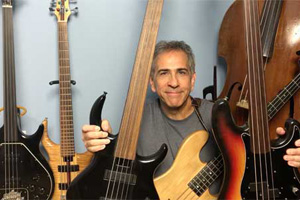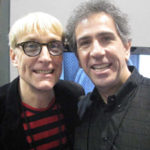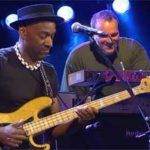Sure and steady, one-step-at-a-time, is the best way to get there
By Jon Liebman
August 23, 2018
This week’s “For Bass Players Only” interview with Keith Jones is a wonderful testament to musicians who are proficient in a variety of styles, genres and techniques. Throughout his stellar career, Keith has toured extensively with a varied roster of music luminaries, from Carlos Santana and Blood, Sweat & Tears to Wayne Shorter, Al Jarreau, Jean-Luc Ponty, Joe Sample, Jeff Lorber and so many others. Keith has also done recording sessions with Bob Marley, Kenny Loggins, Andy Narell, and Flora Purim & Airto, as well as full-scale motion pictures, including How Stella Got Her Groove Back, The Firm and Basic Instinct, and commercials for Coca Cola and Jelly Bellys. That’s a diversified music portfolio!
Oftentimes, a session player may walk into the studio without knowing quite what to expect, armed and ready for darn near anything.
Being a well-rounded bass player is beneficial in just about any musical situation. Whether you’re a hobbyist who just wants to have fun making music, or a highly focused, career-minded individual with sights on a serious career in music, the more you can do with the bass, the more potential opportunities you’re likely to find.
Ask yourself how high your confidence level is in the following styles and techniques and see if you can identify the ones most deserving of your attention (feel free to add other to the list as well):
- Blues shuffle
- Funk/R&B
- Disco
- Slapping
- Punk
- Latin
- Reggae
- Jazz/swing
- Country and bluegrass
- Heavy metal
- Driving, 8th-note rock
- Hip-hop
- Gospel
- Dance
- Ballads
Here are some other aspects you might want to tackle:
- Fretless bass
- 5-string, 6-string or other extended-range basses
- Upright bass
- Playing with a bow
- Keyboard bass
- Familiarity with effects (chorus, delay, flanger, octave, etc.)
Audio production is yet another skill that may serve you well if you acquire an aptitude for Logic, ProTools and other DAWs (digital audio workstations).
You don’t need to learn everything right away. You may not even see the need to learn everything on the list. That’s okay. The important thing is to learn as much as you can without letting yourself get overwhelmed.
Be sure to keep things in perspective. Pick one item and go with it till you’ve attained a certain level of proficiency. Then go on to the next one. If you work on, say, one style per month, by this time next year, you’ll have 12 new areas where you’ve significantly improved your bass playing. Diversify, sure and steady. When you look back, you’ll be amazed!
Check out my interview with Keith here.
I’ve also done interviews with lots of other people who’ve managed to make a living as musical chameleons, often having no idea what they were about to face while approaching a new facet of the musical “jungle” every day. These interviews offer a varied cross-section of musical situations. I think you’ll enjoy them: Abraham Laboriel, Will Lee, Carol Kaye, Leland Sklar, Neil Stubenhaus, Dave Swift
Also, my Bass Grooves: The Ultimate Collection book contains 150 grooves, covering practically every kind of genre you can imagine (and maybe even a few you hadn’t thought of!). Order a personalized, signed copy here.






